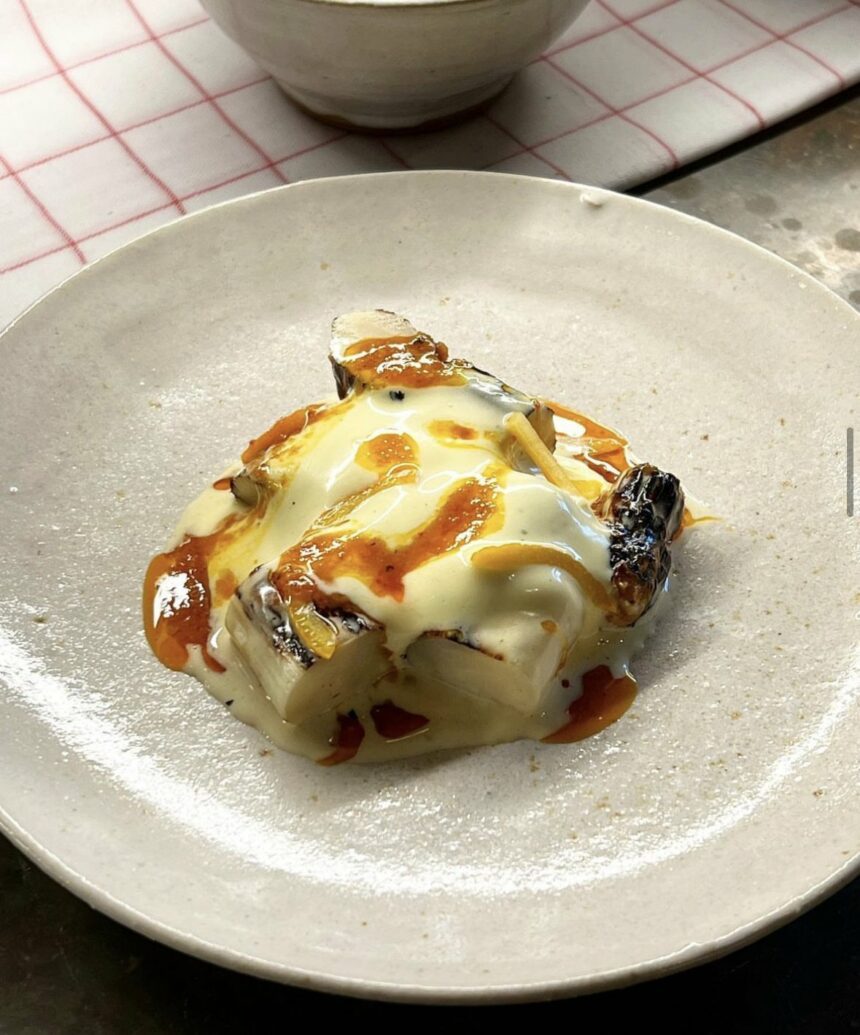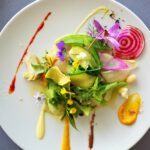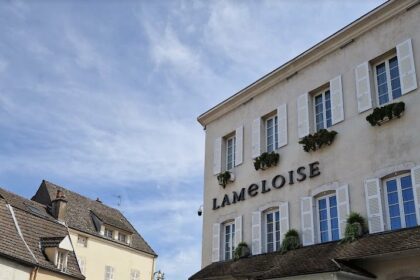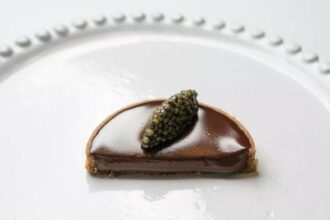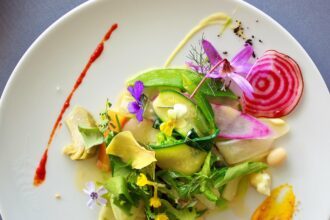Frantzén
Frantzén is a very famous restaurant, and it is difficult to make a reservation. It gets three stars from Michelin, is ranked as one of the ten best restaurants in the World’s 50 Best Restaurants list, and has received many accolades from individuals whose palate I respect. So my viewpoint is clearly a minority opinion, but I don’t have any caveats in expressing it.
The gist of it is that I found all but one dish ordinary. I also thought that the staging of the food is a little manipulative. Following the amuses, all diners are ushered to the kitchen and sit at countertops. The (mostly grill) chefs who are putting finishing touches on the dishes are introduced to the clients. This gives the impression of a cooking style based on “fire”, whereas, I believe, most dishes are cooked “sous vide” and/or tenderizers are used to obtain soft textures. It is obvious that there is a lab, test kitchen and prep kitchen, etc., and most dishes are pre-cooked and finished/assembled in front of you. As I have seen in other celebrated restaurants in Scandinavia, the texture of crustaceans, fish and meat is unnaturally soft, and the crustaceans are served at room temperature or slightly warm. All in all, this is a “compose the dishes” type of cuisine, rather than one where dishes are cooked in the traditional sense.
Various dishes look beautiful, but are they delicious? One dish was delicious. “Chawanmushi, tear drop peas, ikura and fermented white asparagus” would have satisfied the most perfectionist Japanese chefs. The silky sweet custard was enriched by the contrast between the sweetness of the green caviar—the baby fresh peas from Spain—and the brininess of salmon caviar. The fermented white asparagus added not only a depth of umami, but also a metallic-earthy edge. The dish was balanced and deep!
The nod to Japan also gave a good result with the crudo. “Crudo, Hamachi, salted radishes, strawberries and birch oil” was a happy marriage of Japan and Scandinavia.
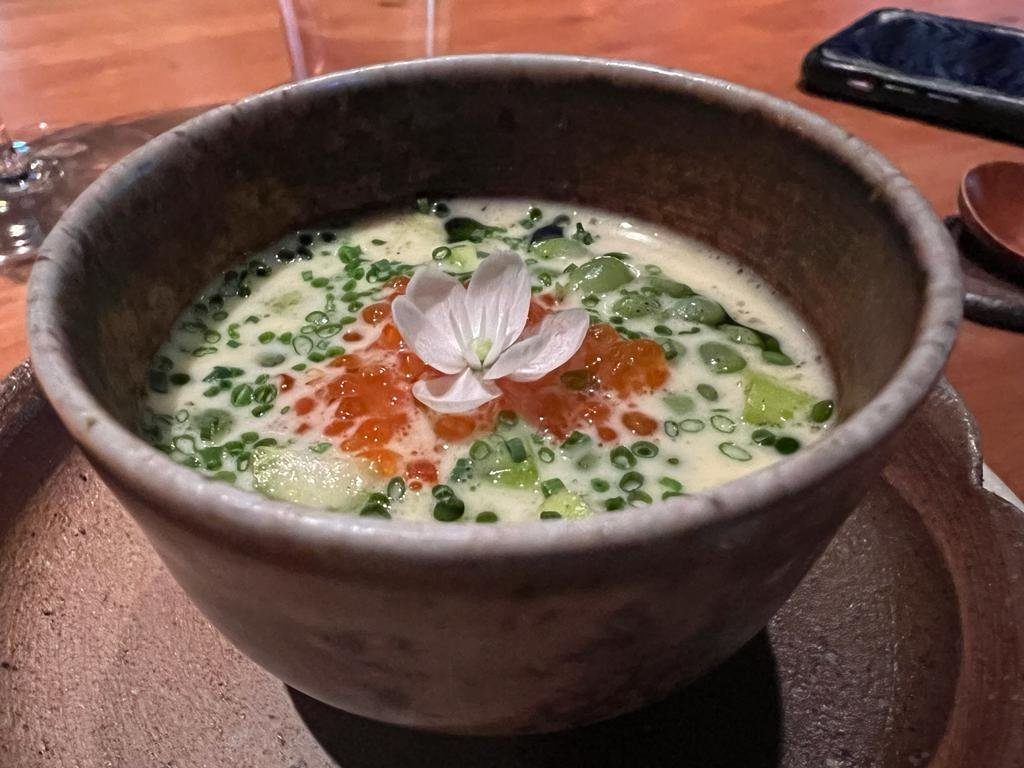
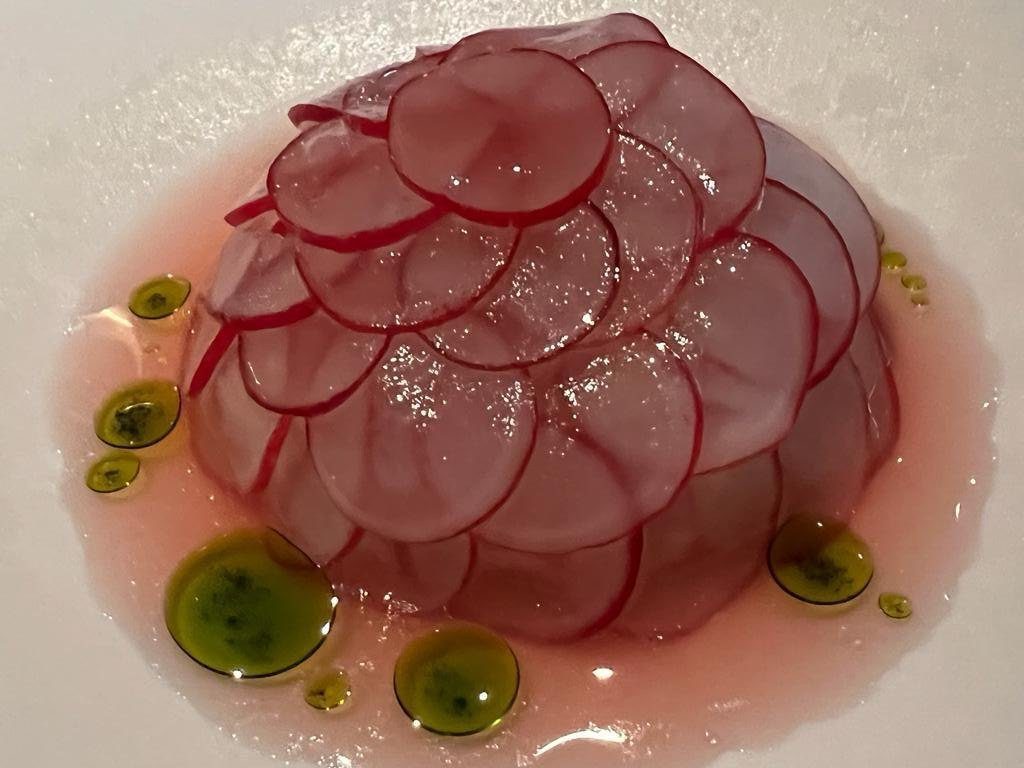
Unfortunately, the rest of the dishes were less convincing. The canapes, ikura sushi and small tarts offered with champagne were nice, but did not leave any lasting impression. The crudo of Hamachi I mentioned above was the first dish on the menu. It was followed by langoustine, chawanmushi, cod, king crab, lamb and frozen lime marshmellow as a dessert. The overall problem was that in every single dish we were told that the fish or crustacean or the lamb was “grilled”, but they all tasted too soft and overly subtle in taste. If the goal was to create non-offensive and beautiful dishes from seafood and meat that one can eat with a spoon, then the chefs succeeded.
To illustrate my frustration, let me show the three photos.
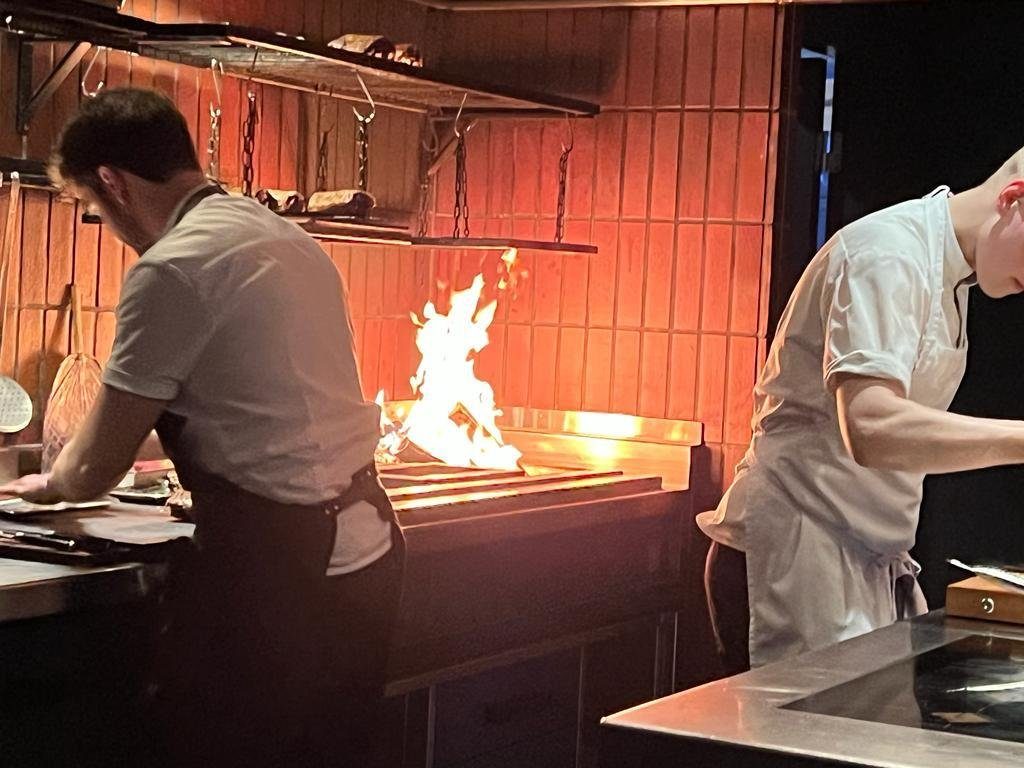
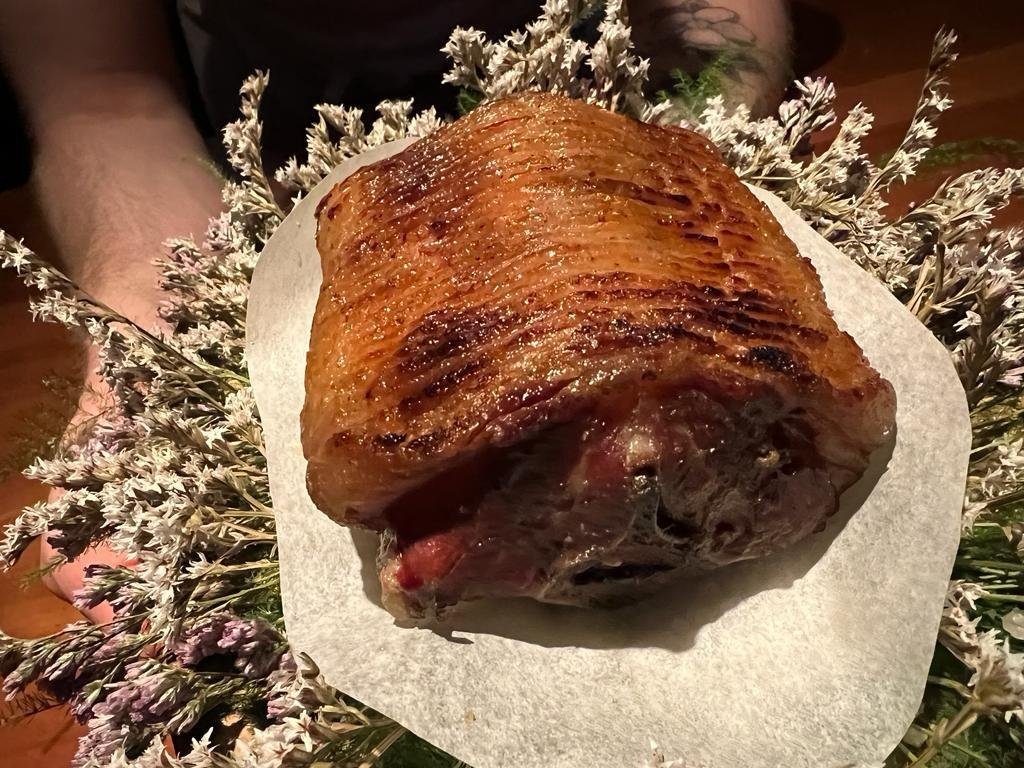
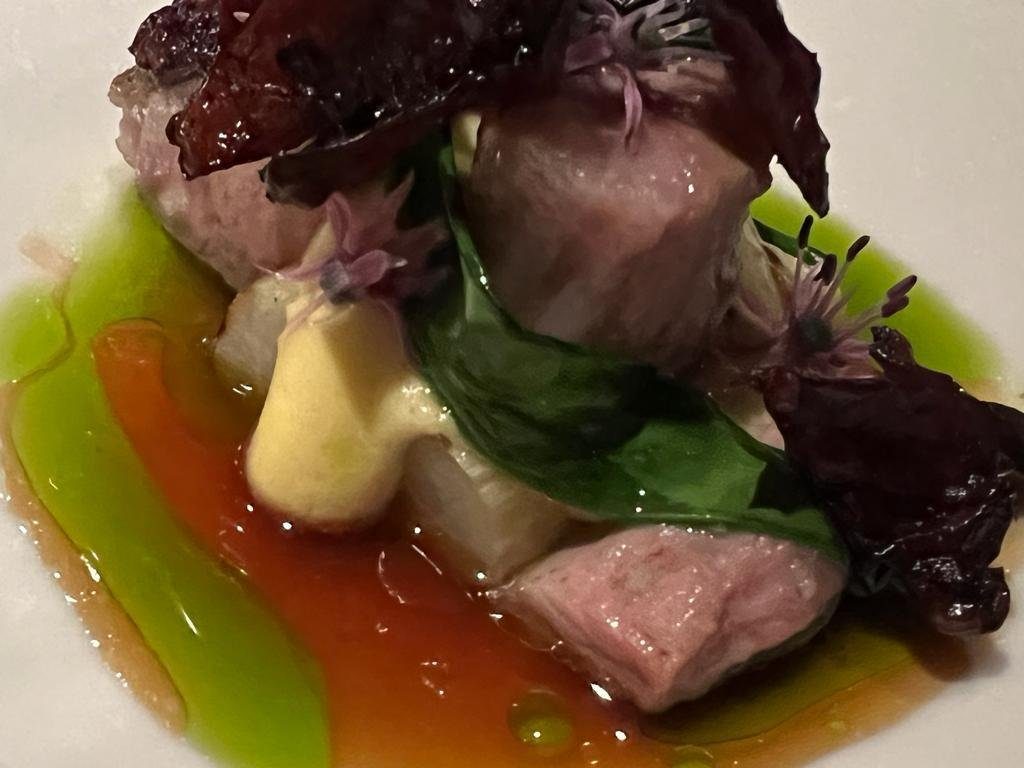
First, you see the grill and the fire. Second, the last dish, the grilled lamb is presented as a whole; incredibly appetizing. But thirdly, when you taste “Lamb, spring onion sabayon, ransom and grilled roses”, you realize that this is the softest, least offensive lamb you have ever tasted. Perhaps it is designed beautifully for people who are not used to eating lamb and who think that lamb smells! But the truth is that the best part of the lamb is the crunchy skin and the thin layer of fat underneath. That’s why the piece of the lamb attached to the bone is the most flavorful. Here the chef must disagree as they served a teeny-tiny piece each from the saddle and the loin, both devoid of fat and without the crunchy skin. The sauce was good, and the pickled ransom was a nice touch. I suppose it was the touch of acidity in search of the missing fat!
EVALUATION: 14/20
ETT HEM
This was my best meal in Scandinavia. The restaurant is housed in a beautifully designed villa which is a boutique hotel. It feels like dining in somebody’s private home. You start the meal with sipping your Hune Freres champagne and nibbling excellent Cecina, culatello and chorizo in one of the comfortable rooms of the villa. Then you move to the kitchen for the meal. The two chefs cook in front of you, but this is not a spectacle. What you see is what you get, as there is no test kitchen. The aim is not to be “creative” and compose beautiful concoctions and serve them at room temperature. Here the chefs fry, saute and roast high quality, seasonal ingredients. This is not an avant garde “gastronomic experience”, but time tested, precise cooking that respects the integrity of ingredients. Hats off to the executive chef Jacob Ker Lamb.
Everything we tasted was delicious. White asparagus consommé had gained an extra edge of umami from fermented asparagus. The fresh white asparagus tips were presented grilled and combined with a soothing sabayon and hot nduja. This dish displayed a nice balance between earthy, hot and slightly sweet.
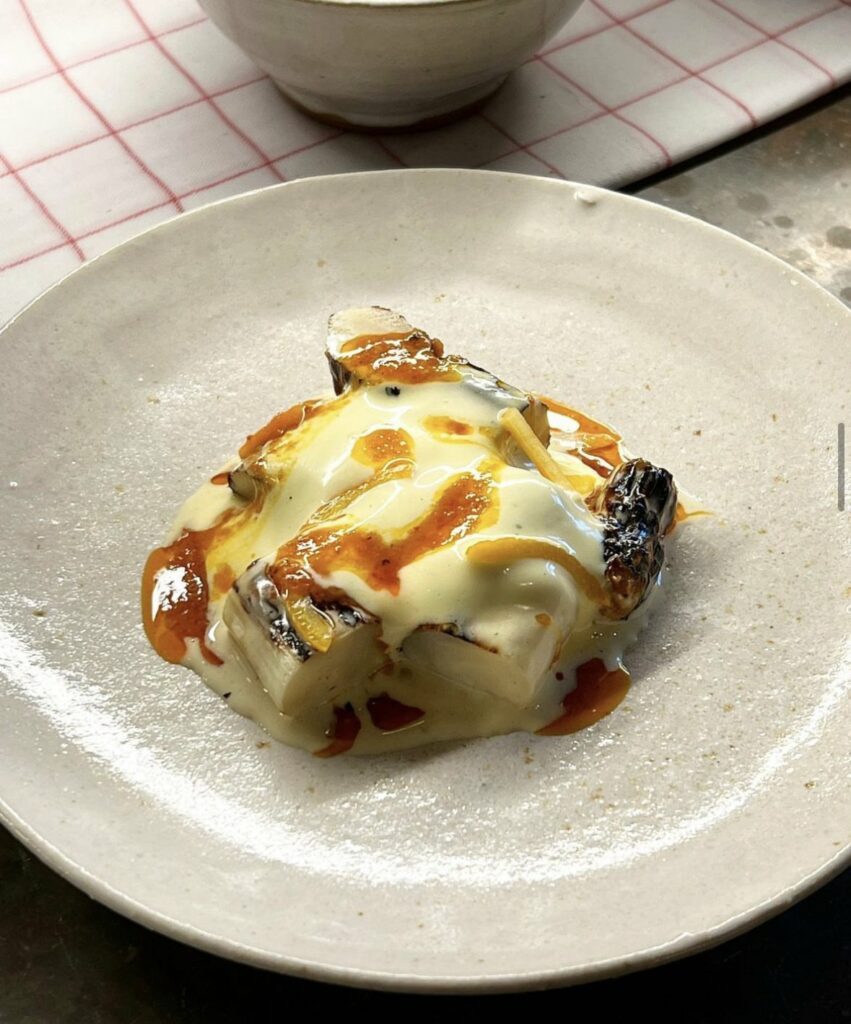
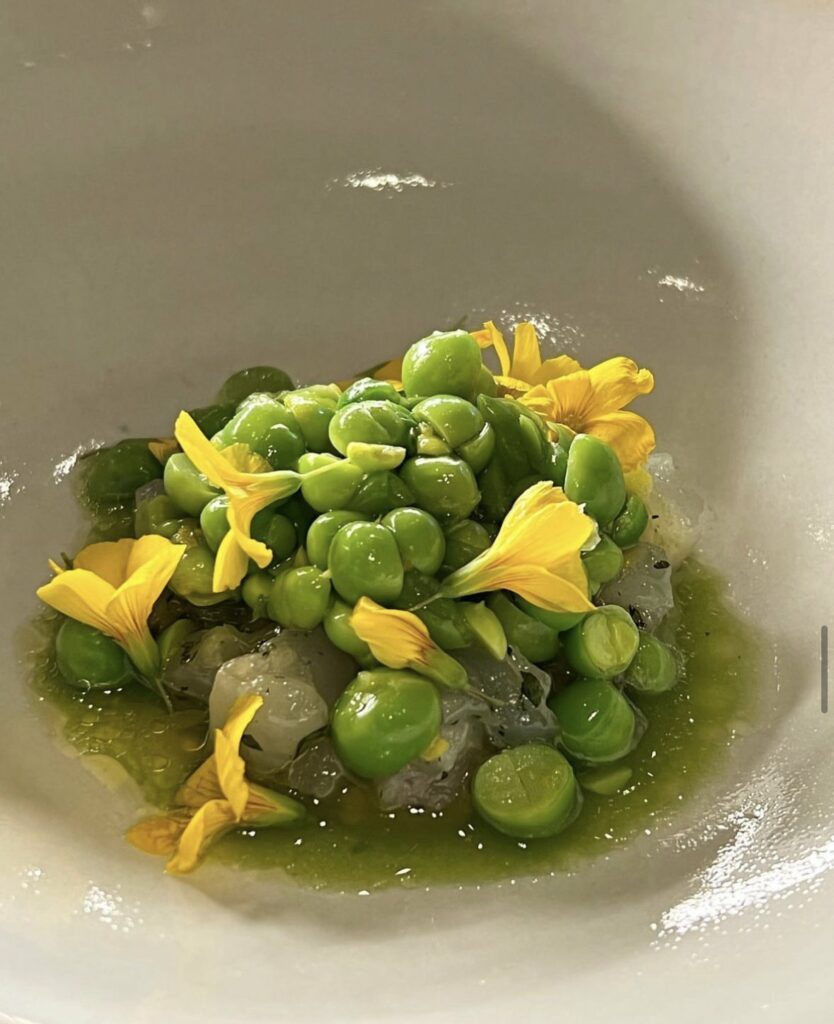
We then proceeded towards a more assertive flavor: lobster with curry. They barbecued local blue lobster after brushing the surface with thyme and butter and served it with vadouvan curry and homemade guanciale. It was an excellent dish. After this came a more refreshing raw fish dish with clean and pure flavors, that is, a citrus infused halibut tartare from Norway, served under a blanket of fresh mint and sweet peas, which popped on my palate like beluga caviar.
It was then the turn of a pasta dish: “Taglioline with nettles, morels, fondue of parmesan and bread crumbs”. The quality of the morel mushrooms was easily noticeable. Finally, we had river trout meuniere. The trout was fresh tasting, as it came from the Dolana river, which is four hours north. It was served with a hazelnut infused classic hollandaise, green asparagus from Gotland, mustard seed shoots, and thyme.
They also offered a remarkable cheese from the famous affineur, Bernard Antony. No, it was not a Comté cheese for which Antony is rightly famous, but, an equally complex, Gruyère. The dessert was also the most seasonal—and probably best—of the trip to Scandinavia: fresh garriguette strawberries with strawberry-rhubarb chiboust cream, strawberry sorbet and purple basil granite.
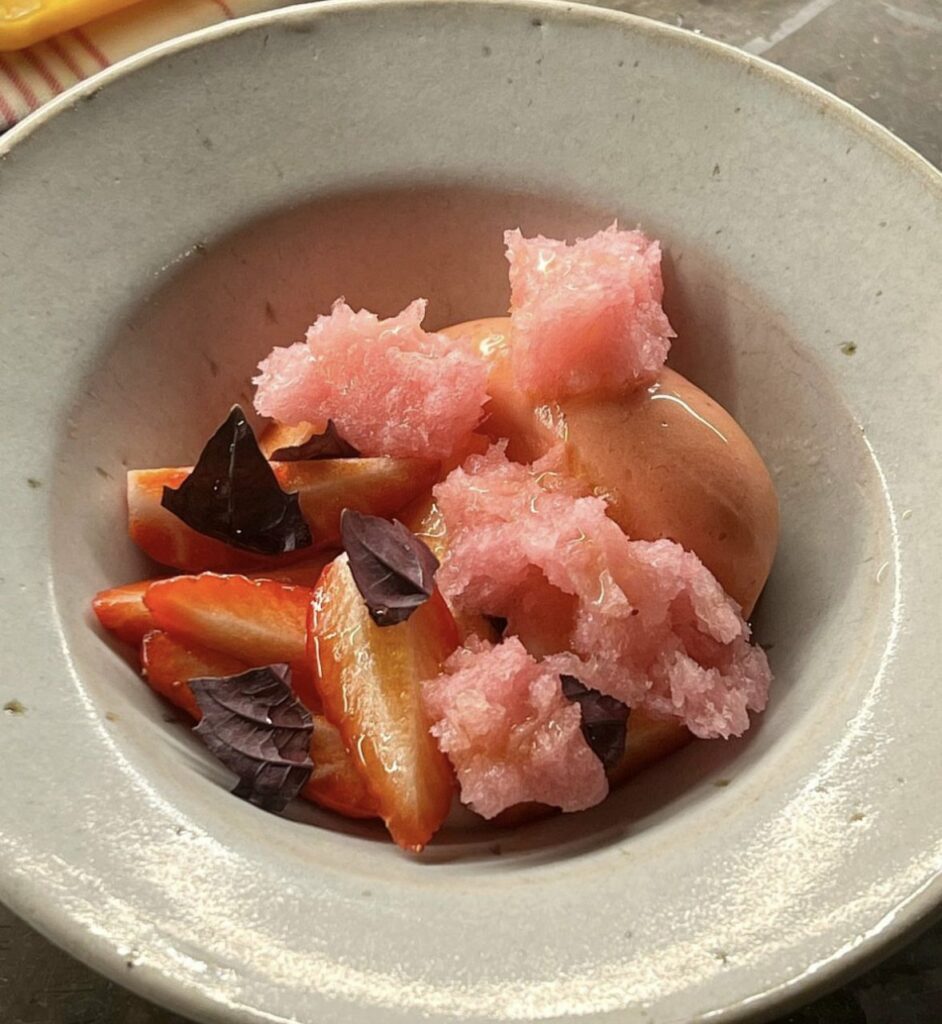
The wines selected by Niklas Ödman paired well with the menu: 2020 Boudignon Anjou blanc; 2012 Nuits St Georges Les Fleurieres from JJ Confuron; and 2020 Labet Macvin de Jura, which was an assemblage of four years from 2012, 2015-6 and 2018. Finally, for the dessert, we had 2018 Montlouis Sur Loire Chenin Safran from Ludovic Chanson.
We had fresh white and green asparagus, morel mushrooms, peas, strawberries, all seasonal ingredients that one expects from a meal at the end of April. I thought that Ett Hem provided us with the most seasonal dining experience of our Scandinavia trip that consisted of pure and precise flavors. I also want to thank them for respecting the client as they spared us from the patronizing narrative that we sometimes encounter in the contemporary fine dining scene.
EVALUATION: 17/20
